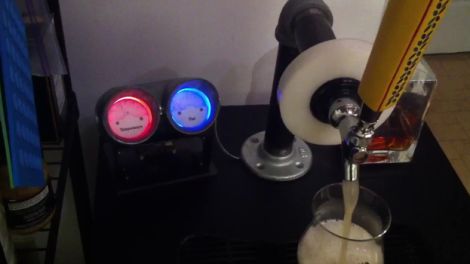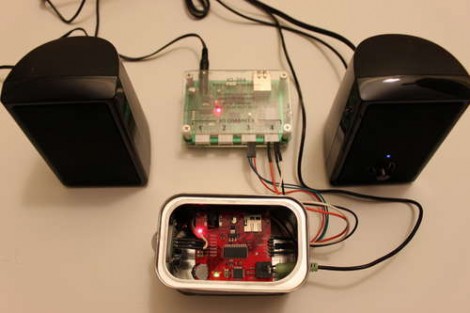
A few years back [Evan] built a kegerator from a mini fridge and was quite happy with his new beer chiller. Like many of us do, he started thinking up ways in which he could improve the project as soon as it was completed. While it took a couple of years, he recently got around to adding the temperature and capacity gauges he always wanted.
He added a temperature probe to the refrigerator, and then constructed a pair of tools that he could use to measure how much beer was left in the keg. The volume monitors include a scale built using a pair of pressure sensors from SparkFun, and a flow sensor installed in the beer line.
[Evan] scored an old Chevy gauge cluster and cleaned it up before installing a pair of analog meters which he used to show the keg’s temperature and “fuel” level. Since he feels no project is complete without some LED love, he added a few of them to the display without hesitation. The LEDs calmly pulsate when the keg sits idle, but spring to life and begin flashing when the flow sensor is activated.
As evidenced by this pair of keg monitoring systems, we think that you can never have enough information when it comes to your beer stash, so we really like how this project came together.
Be sure to check out his kegerator’s gauge cluster in the video below.
Continue reading “Keep All Eyes On Your Kegerator With This Light Up Gauge Cluster”















